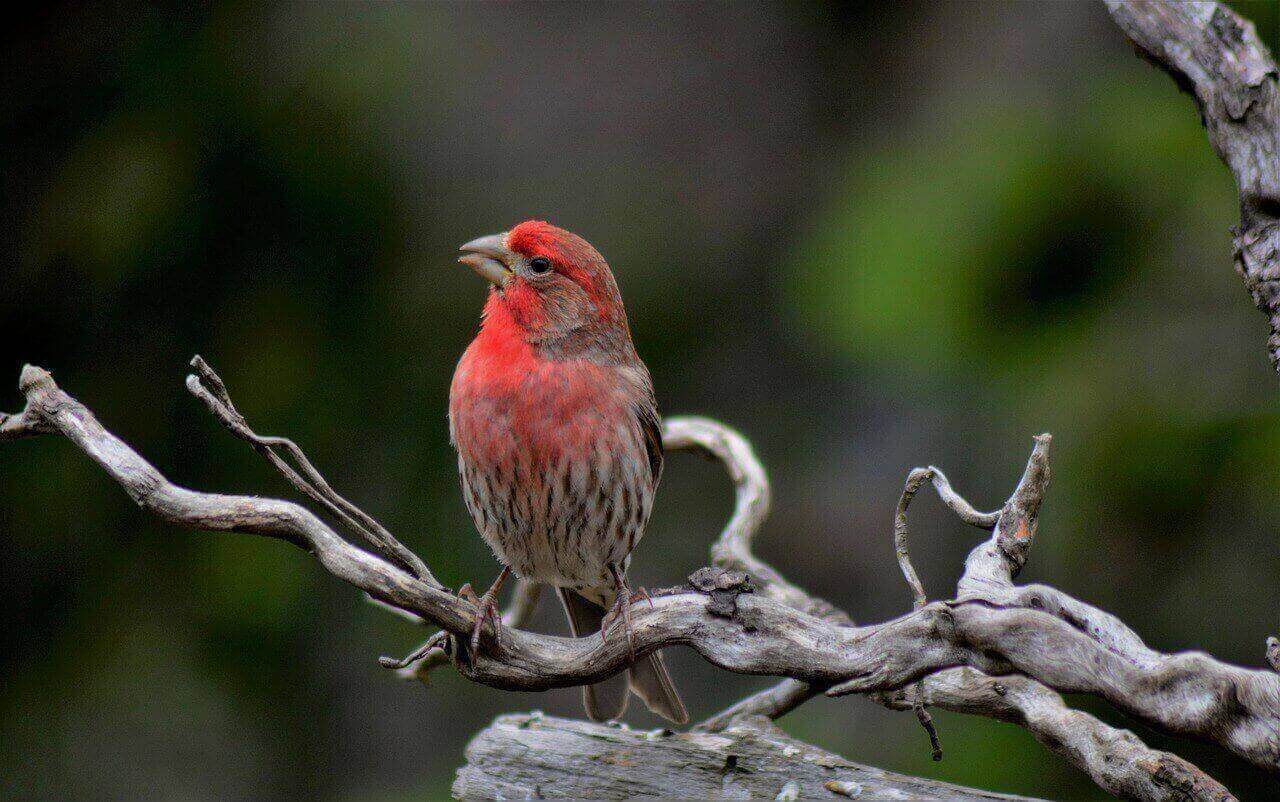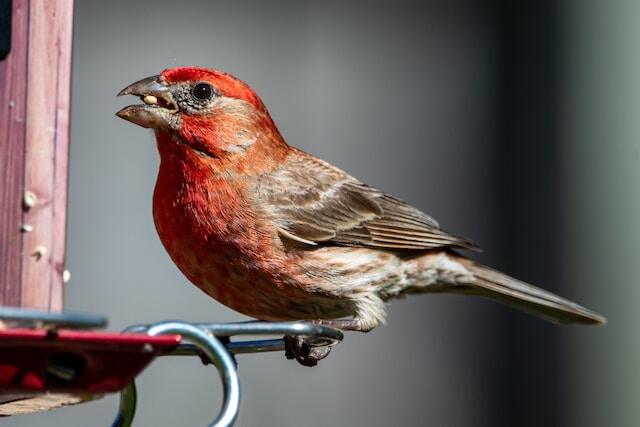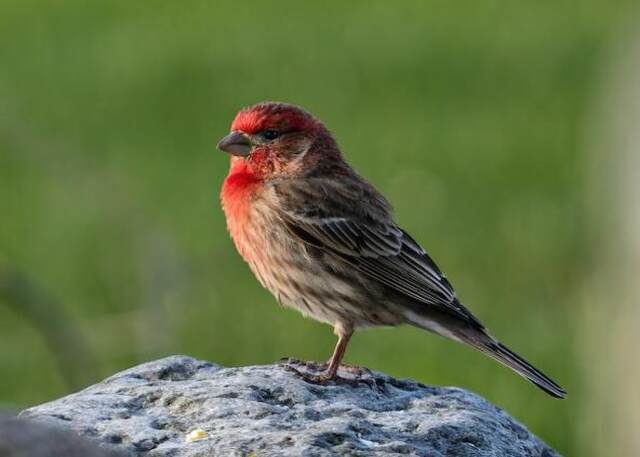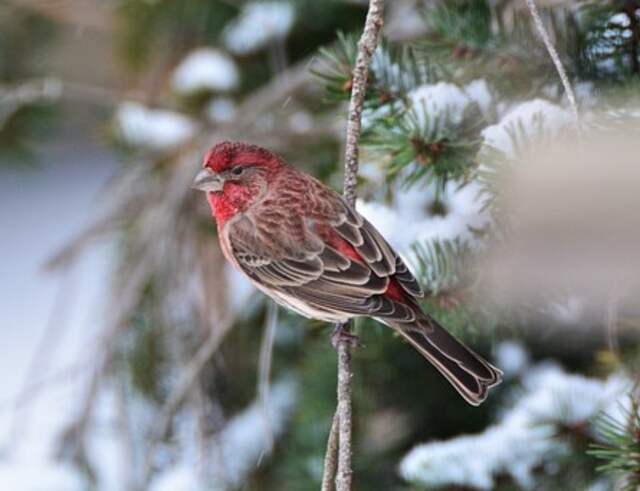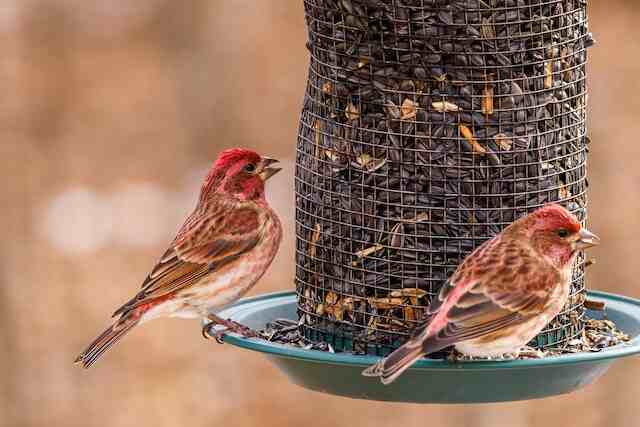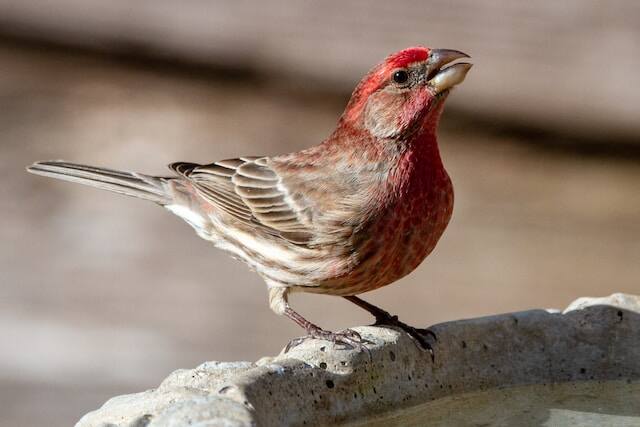Welcoming the charming presence of house finches into your yard can transform your outdoor space into a vibrant haven of bird activity. With their cheerful chirps and colorful plumage, attracting house finches can add a delightful touch of nature to your surroundings.
In this guide, we’ll explore simple yet effective strategies to entice these feathered friends to visit your yard regularly. From providing the right food and shelter to creating an inviting environment, discover how you can encourage house finches to grace your yard with their presence and enhance your connection with the natural world.
Table of Contents
- 1 Key Takeaways
- 2 How to Attract House Finch to your Yard?
- 3 Understanding House Finches
- 4 Choosing the Right Bird Feeders
- 5 House Finch Favorite Foods
- 6 Creating a House Finch-Friendly Habitat
- 7 Creating a House Finch-Friendly Habitat
- 8 Protecting House Finches and Their Nests
- 9 Troubleshooting Common Challenges
- 10 Conclusion
- 11 FAQs: How to Attract House Finch to your Yard?
- 11.1 How do I attract house finches to my yard?
- 11.2 What types of bird feeders attract house finches?
- 11.3 How can I create a house finch-friendly habitat?
- 11.4 What are the favorite foods of house finches?
- 11.5 Why is a water source important for attracting house finches?
- 11.6 How can I protect house finches and their nests?
- 11.7 What are some common challenges when attracting house finches?
- 11.8 What should I do if house finches do not visit my yard?
- 12 Author
Key Takeaways
- Attracting house finches to your yard requires an understanding of their preferences and needs.
- Creating a welcoming environment includes providing the right food, water, shelter, and nesting materials.
- Protecting house finches and their nests from predators is crucial to ensure a safe habitat for them.
- Troubleshooting common challenges, such as dealing with aggressive birds or pests, can help you successfully attract house finches to your yard.
| Aspect | House Finch Overview |
|---|---|
| Identification | The House Finch is a small to medium-sized bird with a rosy red head and upper breast, streaked brown belly, back, and tail. |
| Length | 5.0-5.5 in (12.7-14 cm) |
| Weight | 0.5-0.9 oz (15-27 g) |
| Wingspan | 8.0-9.8 in (20.3-25 cm) |
| Habitat | Found in various habitats including backyards, gardens, buildings, conifers, grasslands, fields, barns, and woodlands. |
| Thrives in suburban areas, utilizing shrubs, hedges, trees, houses, and barns. | |
| Nests on or near the ground and in the branches of bushes. | |
| Food | House Finches eat seeds, grubs, insects, worms, and insect eggs. |
| Social birds that forage together for food. | |
| Prefer black oil sunflower seeds, milo, and millet when feeding from feeders. |
How to Attract House Finch to your Yard?
To attract House Finches to your yard, provide them with a variety of food options such as black oil sunflower seeds, nyjer seeds, and safflower seeds in a tube feeder. Avoid using pesticides and herbicides as they can harm finches and their food sources.
Offer a water source for drinking and bathing. Plant native plants and shrubs that provide cover and nesting sites. Keep the feeding area clean to prevent the spread of disease. With patience and persistence, you can attract these colorful birds to your yard.
Understanding House Finches
Before you can attract house finches to your garden, it’s important to understand these birds and their preferences. House finches are small, colorful birds that are native to North America. The males have bright red feathers on their heads and chests, while the females have more subdued coloring with stripes and brownish-gray feathers.
House finches are social birds that prefer to travel in flocks. They are also well adapted to living in human environments and are often found in suburban areas. To entice house finches to your garden, you must create a habitat that meets their needs.
One of the best ways to attract house finches to your garden is by providing bird feeders. House finches love to eat seeds, and they will flock to your garden if you provide them with a steady supply of their favorite foods. Safflower, sunflower and thistle seeds are all popular among house finches.
When choosing a bird feeder, look for one that is sturdy and easy to clean. A feeder with multiple ports will allow several birds to feed at once, which house finches will appreciate.
In addition to providing bird feeders, it’s important to create a welcoming environment for house finches. This includes planting flowers and shrubs that provide food and shelter, as well as installing a bird bath or other water feature. House finches are also attracted to gardens that have plenty of cover, such as trees or bushes.
Attracting House Finches with Bird Feeders
House finches are avid seed-eaters and will visit bird feeders frequently. To entice house finches to your garden, try offering black oil sunflower seeds, thistle seeds, and safflower seeds. Mixing these seeds together in a feeder will provide a varied and nutritious diet for the birds.
When selecting a bird feeder, look for one that can hold a variety of seed types. I find that it’s easiest to attract them to your backyard with hopper or tube feeders stocked with black oil sunflower seeds. These birds just love it.
One highly recommended feeder is the Belle Fleur Sedona Screen Feeder, and it’s available on Amazon. Make sure the feeder is hung at a height that is convenient for the birds to access, but also be mindful of predators such as squirrels and cats.
Keep your bird feeder clean and well-stocked to attract house finches. It’s best to fill the feeder in the morning and again in the afternoon to ensure a steady supply of food. Avoid filling the feeder to the brim, as this can lead to seed spoilage.
By offering a variety of seeds and keeping your feeder clean and well-stocked, you can attract house finches to your garden and enjoy watching these beautiful birds all year round.
Choosing the Right Bird Feeders
House finches are attracted to bird feeders that are the right size and shape for their beaks. The ideal feeder should hold seeds that are small enough for them to handle. Tube feeders with small ports and hopper feeders that provide a flat surface for perching are great choices.
It’s also essential to choose feeders that are easy to clean and maintain. House finches are messy eaters, and food that gets wet or spoiled can cause health problems for them. Opt for feeders that have removable parts and are easy to dismantle.
Another way to attract house finches is by providing nesting materials. These birds are known to build their nests with materials such as twigs, grass, and feathers. Consider offering materials such as cotton, wool, and pet hair for them to use.
House Finch Attractant Techniques
| Technique | Description |
|---|---|
| Seed Variety | House finches prefer black-oil sunflower seeds and nyjer (thistle) seeds. Offer a mix of these seeds to attract them to your feeder. |
| Location | Place feeders in a sheltered area that is away from predators such as cats and squirrels. |
| Feeder Placement | Hang feeders at different heights and in different locations to attract a variety of birds, including house finches. |
| Nesting Materials | Offer nesting materials such as cotton, wool, and pet hair to entice house finches to stay in your yard. |
By using these house finch attractant techniques and choosing the right bird feeders, you can create an inviting environment for these birds in your yard. Remember to clean and maintain your feeders regularly and offer a variety of seeds and nesting materials to keep them happy and healthy.
House Finch Favorite Foods
If you want to attract house finches to your yard, it’s important to know what they like to eat. House finches are primarily seed-eaters, but they also enjoy fruit and insects.
Some of their favorite foods include:
- Black oil sunflower seeds
- Nyjer seeds
- Safflower seeds
- Cracked corn
- Chopped peanuts
- Dried fruit, such as raisins or currants
When choosing foods to offer house finches, it’s important to provide a variety of options. This will not only attract more birds, but also ensure that they are getting all the nutrients they need for a healthy diet.
In addition to seed and fruit offerings, it’s a good idea to provide a source of clean water for house finches. This can be in the form of a birdbath or a shallow dish filled with water. A birdbath I would recommend is the VIVOSUN 2-in-1 Outdoor Garden Bird Bath.
Remember, offering food and water is just one aspect of creating a welcoming environment for house finches. To truly entice them to your garden, you’ll need to provide a variety of habitats, including shelter, nesting materials, and a reliable source of water to drink, bathe, and preen.
Creating a House Finch-Friendly Habitat
If you want to attract house finches to your yard, it’s essential to create a welcoming environment that meets their specific needs. Fortunately, with some careful planning and strategic planting, you can create a habitat that is perfect for these beautiful birds. Here are some house finch attracting strategies to consider:
1. Plant Native Vegetation
House finches are well adapted to living in a variety of habitats, from cities to rural areas. However, they are most comfortable in habitats that resemble their natural environment. One way to attract house finches to your yard is to plant native vegetation that provides food, shelter, and nesting sites.
Native plants are well-adapted to local conditions and support a diverse community of insects and other wildlife that house finches rely on for food. Consider planting sunflowers, coneflowers, and black-eyed Susans to attract house finches.
2. Provide Shelter
House finches prefer habitats that offer shelter from the elements and protection from predators. You can provide shelter by planting trees and shrubs that offer cover. Be sure to include evergreen shrubs and trees that provide year-round protection. Additionally, you can install birdhouses or nesting boxes in your yard to provide house finches with a safe nesting site.
3. Offer Water Sources
Water sources are vital for attracting house finches and other birds to your yard. House finches need water for drinking, preening, and bathing. You can provide water by installing a birdbath or a drip fountain. Be sure to clean and change the water regularly to prevent the spread of disease.
4. Keep it Natural
When creating a habitat for house finches, it’s essential to keep it as natural as possible. Avoid using pesticides and other chemicals that can harm house finches and other wildlife. Instead, focus on creating a natural habitat that supports a diverse community of plants and animals.
By following these house finch attracting tips, you can create an ideal habitat that attracts these beautiful birds to your yard. Remember to be patient and persistent, as it may take time for house finches to discover your yard and feel comfortable enough to nest.
Creating a House Finch-Friendly Habitat
If you want to attract house finches to your yard, it’s essential to create a welcoming environment that will appeal to these birds. Here are some tips on how to create a house finch-friendly habitat:
Plants
House finches are attracted to yards with a variety of plants, including trees, shrubs, and flowers. They prefer plants with small, hard seeds, such as coneflowers, sunflowers, and thistle. To attract house finches to your yard, plant a mix of native and non-native species, and offer a range of seed-bearing plants that bloom throughout the year.
Water Sources
Water sources are essential for attracting house finches to your yard. To lure these birds, consider creating a bird bath, fountain, or other water feature that provides a reliable supply of clean water. House finches are also attracted to drippers or misters that simulate rain, so consider adding these features to your water source.
Shelter
House finches are social birds that prefer to live in flocks, so providing shelter is important for attracting and retaining these birds. Dense shrubs, trees, and birdhouses can all provide shelter for house finches, while also protecting them from predators.
Food and Feeders
House finches are primarily seed-eaters, so offering a variety of seeds and other foods can attract these birds to your yard. Consider offering black oil sunflower seeds, nyjer seeds, and safflower seeds to attract house finches. You can also provide fruit, such as sliced apples or grapes, as well as suet cakes or mealworms.
In addition to offering the right foods, it’s important to choose the right feeder. House finches prefer tube feeders with small perches and ports, and they are also attracted to feeders with a tray or hopper. Make sure to clean your feeders regularly to prevent the spread of disease.
By following these tips, you can create a house finch-friendly habitat in your yard and attract these beautiful birds to your garden.
Protecting House Finches and Their Nests
As you work towards attracting house finches to your yard, it is important to take steps to protect them and their nests. Here are some tips to ensure their safety:
- Choose safe locations for bird feeders: If you’re placing bird feeders, make sure they are not too close to bushes or structures which could hide predators.
- Hang bird feeders high: Ensure bird feeders are hung high enough such that predators cannot reach them easily.
- Provide nesting materials: House finches require materials such as twigs, grasses, and leaves to construct their nests. You can provide these materials in a birdhouse where they can build their nests.
- Install birdhouses: Install birdhouses in areas that are not easily accessible to predators. Birdhouses should be placed at a safe distance from bird feeders.
- Regularly clean bird feeders: Dirty bird feeders can harbor harmful bacteria and fungi that could harm the birds. Clean your bird feeders regularly with hot, soapy water.
By taking these simple steps, you can help protect house finches and their nests, ensuring a safe and welcoming environment for these beautiful birds.
Troubleshooting Common Challenges
While attracting house finches to your yard can be a rewarding endeavor, it’s not without its challenges. Fortunately, there are some common issues that bird enthusiasts face when trying to attract these birds, and there are ways to overcome them.
Challenge 1: No House Finches are Visiting your Yard
If you’ve set up your yard to attract house finches but haven’t had any takers, there could be a few reasons why. One possibility is that house finches may not be native to your area, or they may not be migrating through your region at this time. Another reason could be that it’s not the right season for house finches to be nesting; they typically nest from late winter to early summer.
Solution: Do some research on the house finch population and migration patterns in your area. Wait until the appropriate season, and try adjusting the food or bird feeders you’re using to better suit house finches’ preferences.
Challenge 2: Competing Birds are Dominating the Feeders
While you may be thrilled to see a wide variety of birds in your yard, competing species can sometimes deter house finches from visiting your feeders.
Solution: Try to keep the feeders away from trees or bushes where other birds can hide and dominate the feeder. Choose bird feeders that are designed specifically for smaller birds, like house finches, and use birdseed blends that are less attractive to larger species.
Challenge 3: House Finches are Not Using the Nesting Materials You Provided
If you’ve provided nesting materials but haven’t seen any evidence of house finches using them, it may not be due to a lack of interest; they could simply be choosing other sources for their nesting materials.
Solution: Try incorporating a wider variety of nesting materials into your yard, like pet hair or feathers, to give house finches more options. You can also try placing the materials in different locations or areas of your yard to see which spots house finches prefer.
Challenge 4: House Finches are Not Staying in Your Yard
While it’s great to attract house finches to your yard, the ultimate goal is to keep them there, so you can enjoy their presence all season long.
Solution: Make sure your yard meets all the requirements for an ideal habitat for house finches, including a reliable water source, a variety of plants for shelter and food, and nesting materials. Make sure the yard is free of any potential hazards and predators. You can also try adding additional birdfeeders or varying the types of food you offer to entice them to stay.
- Overall, attracting house finches requires patience and attention to detail. By understanding their preferences and creating an inviting habitat, you’re likely to see these beautiful birds in your yard in no time.
Conclusion
Attracting house finches to your yard is an exciting and rewarding experience for bird enthusiasts. By implementing the strategies and tips discussed in this expert guide, you can create an inviting environment that entices these beautiful birds to stay.
Remember to provide a diverse and nutritious diet, suitable nesting materials, and a reliable water supply to attract and retain house finches. Creating a house finch-friendly habitat with appropriate plants and shelter is also crucial in enticing these birds to your yard.
Protecting house finches and their nests from potential predators and other dangers is equally important in ensuring their safety and successful breeding.
By troubleshooting common challenges and staying committed to providing a welcoming space for house finches, you can enjoy the company of these delightful birds in your yard. Start implementing these tips today and attract house finches to your yard!
FAQs: How to Attract House Finch to your Yard?
How do I attract house finches to my yard?
To attract house finches to your yard, you can provide a welcoming habitat with the right bird feeders, favorite foods, and a reliable water source. Creating a house finch-friendly habitat and protecting their nests are also important.
What types of bird feeders attract house finches?
House finches are attracted to tube feeders with small feeding ports. Look for feeders with perches to accommodate their preferences. Offering a mix of sunflower seeds, nyjer seeds, and millet can also attract them.
How can I create a house finch-friendly habitat?
To create a house finch-friendly habitat, include native plants that produce seeds and berries in your yard. Provide shelter, such as shrubs or trees, and ensure there is a water source available, such as a birdbath or fountain.
What are the favorite foods of house finches?
House finches enjoy a variety of foods, including sunflower seeds, nyjer seeds, millet, and fruits such as berries. Offering a combination of these foods will help attract them to your yard.
Why is a water source important for attracting house finches?
House finches need a reliable water source for drinking and bathing. Providing a birdbath or fountain can entice them to visit your yard and stay longer.
How can I protect house finches and their nests?
To protect house finches and their nests, avoid using harmful pesticides in your yard. Place bird feeders and nesting materials away from potential predators, and keep domestic pets under control.
What are some common challenges when attracting house finches?
Common challenges when attracting house finches include squirrel interference at bird feeders, aggressive bird behavior, and predators targeting nests. Taking measures like using squirrel-proof feeders and providing adequate shelter can help overcome these challenges.
What should I do if house finches do not visit my yard?
If house finches do not visit your yard, you can try adjusting the placement of your bird feeders, offering different types of food, or adding more native plants and water sources to create a more enticing habitat.

